Figure shows two blocks each of mass m system is released from rest. If acceleration of blocks A and B at any instant (not initially) are a1 and a2, respectively. Then
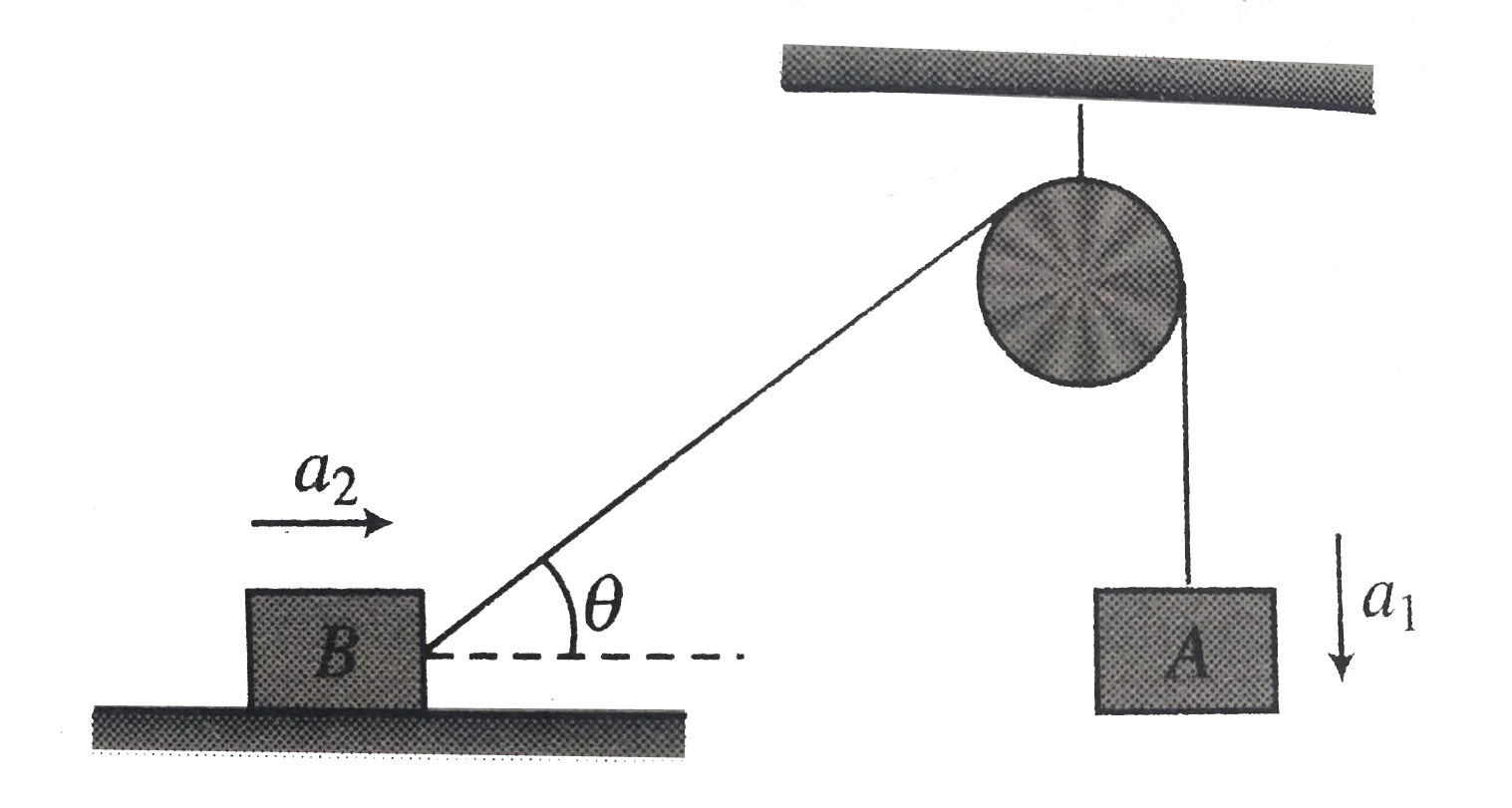
a1=a2cos=θ
a2=a1cos=θ
a1=a2
None of these
The correct Answer is:D
Let at any time, their velocites are v1 and v2, respectively. Then v1=v2cosθ
Differentiating: a1=a2cosθ=v2sinθdθdt
Hance, none of them is correct.
[Note: Option (a) is correct initially, because initially v2=0].
Topper's Solved these Questions
- NEWTON'S LAWS OF MOTION 1Book:CENGAGE PHYSICSChapter:NEWTON'S LAWS OF MOTION 1Exercise:Multiple Correct
Explore 11 Videos
- NEWTON'S LAWS OF MOTION 1Book:CENGAGE PHYSICSChapter:NEWTON'S LAWS OF MOTION 1Exercise:Assertion-reasoning
Explore 15 Videos
- NEWTON'S LAWS OF MOTION 1Book:CENGAGE PHYSICSChapter:NEWTON'S LAWS OF MOTION 1Exercise:Subjective
Explore 15 Videos
- MISCELLANEOUS VOLUME 2Book:CENGAGE PHYSICSChapter:MISCELLANEOUS VOLUME 2Exercise:INTEGER_TYPE
Explore 10 Videos
- NEWTON'S LAWS OF MOTION 2Book:CENGAGE PHYSICSChapter:NEWTON'S LAWS OF MOTION 2Exercise:Integer type
Explore 1 Video
Similar Questions
In the system shown in figure, the block A is released from rest. Find
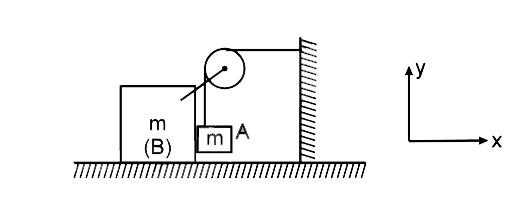
the acceleration of both blocks ‘A’ and ‘B’.
View SolutionIn figure there are two particles A and B each of mass m. A is connected to ceiling by a light inextensible thread OA and B is connected to A by light inextensible thread AB. Initially line OB is vertical. System is released from rest. Initial acceleration of A and B are a1 and a2 respectively. Find the value of 5a1/2a2
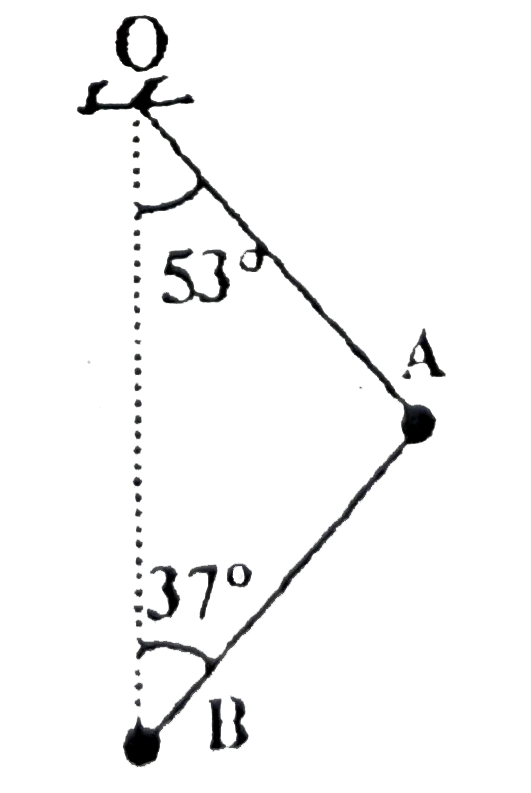
View Solution
Knowledge Check
In given system a1anda2 are the accelerations of blocks 1 and 2. Then constraint relation is
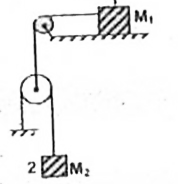 A2a1=a2B2a2=a1Ca1=a2Da1=4a2
A2a1=a2B2a2=a1Ca1=a2Da1=4a2What is the acceleration of block A when the system is released from rest ?
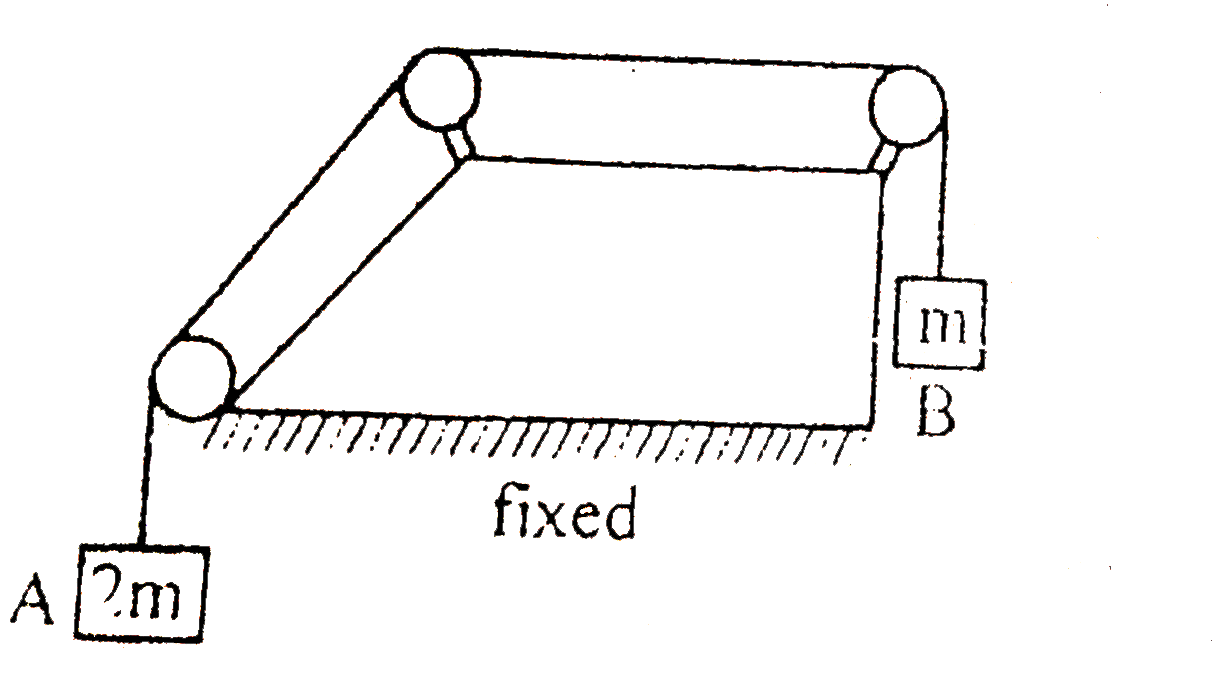 Ag/2 downwardsBg/3 downwardsCg/3 upwardsDg/2 upwards.
Ag/2 downwardsBg/3 downwardsCg/3 upwardsDg/2 upwards.In Fig. a pulley is shown which is frictionless and a ring of mass m can slide on the string without any friction. One end of the string is attached to point B and to the other end, a block 'P' of mass m is attached. The whole system lies in vertical plane.
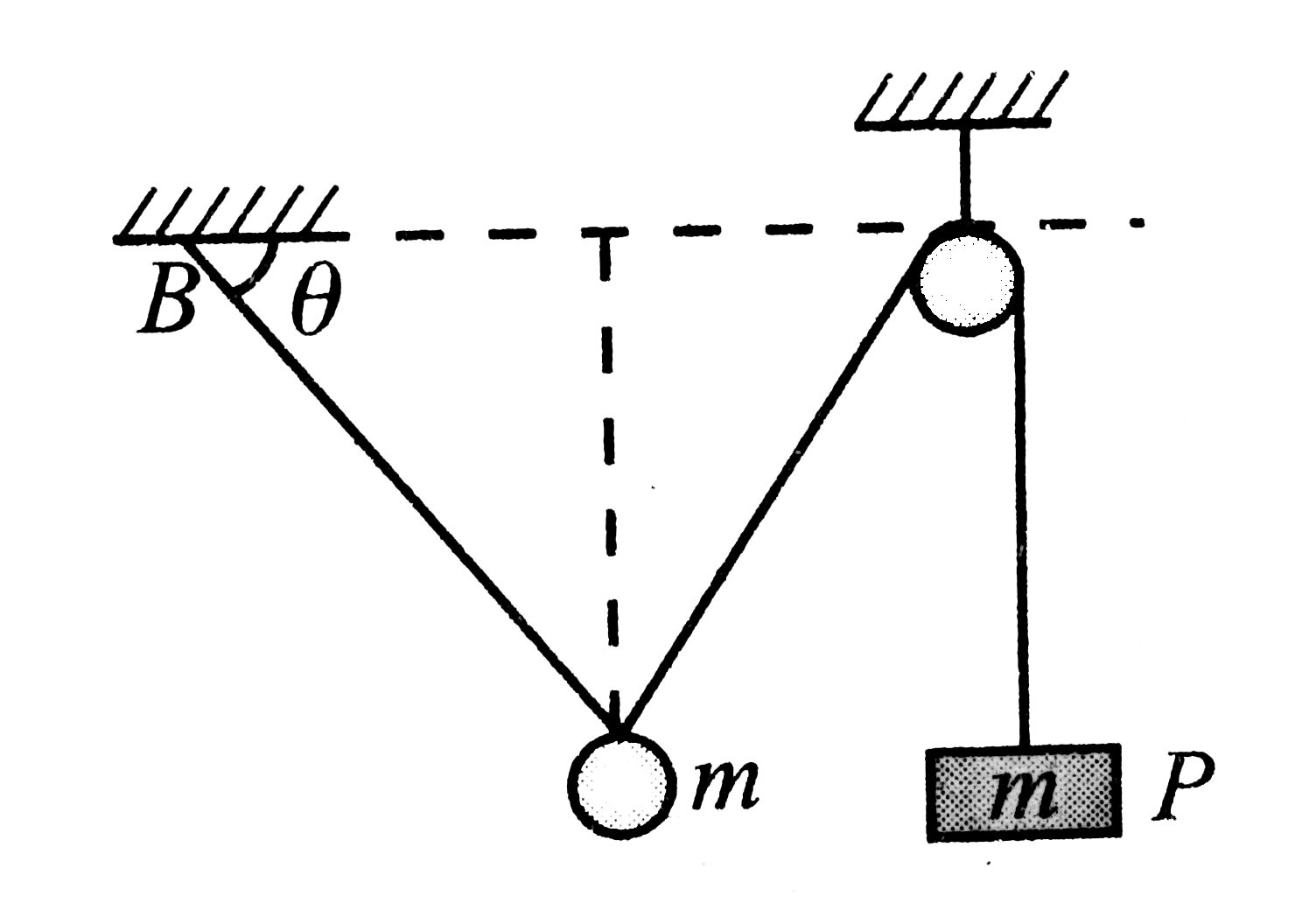 Now another block 'C' of same mass m is attached to the block '13' and system is released from rest. If a1 and a2 are the magnitudes of initial accelerations of ring and blocks, respectively, then Aa1+a2=gBa1+2a2=gCa1=2a2D2a1=a2
Now another block 'C' of same mass m is attached to the block '13' and system is released from rest. If a1 and a2 are the magnitudes of initial accelerations of ring and blocks, respectively, then Aa1+a2=gBa1+2a2=gCa1=2a2D2a1=a2
Figure-2.54 shows a block of mass m is placed on an inclined wedge of mass M If the system is released from rest find the acceleration of m and M.

View SolutionFigure shows a block of mass 2m sliding on a block of mass m. Find the acceleration of each block . ( All surface are smooth )

View SolutionFind the relation between acceleration of blocks a1,a2 and a3.
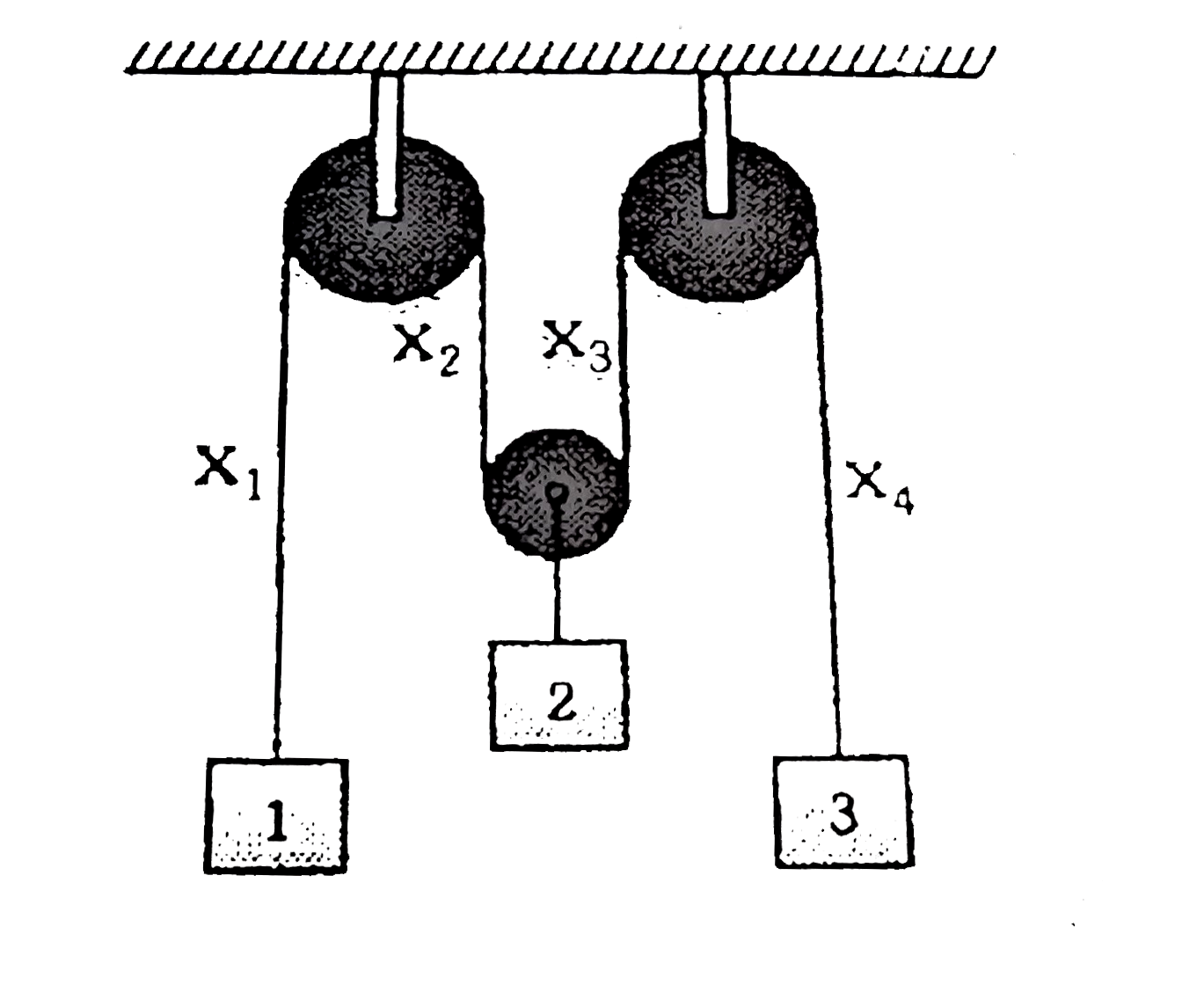
View SolutionFigure-2.64 shows a block of mass M supporting a bar of mass m through a pulley system. If system is released from rest, find the acceleration of block M and the tension in the strings
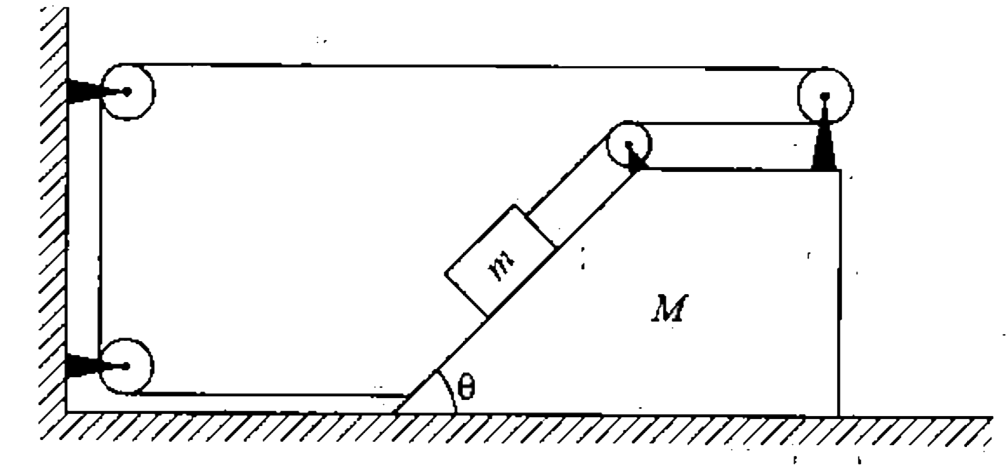
View Solution
All the blocks are attached to an ideal rope which passes over an ideal pulley. If acceleration of blocks m1,m2,m3 and m4 and a1,a2,a3 and a4 respectively then choose the correct option.
View Solution

